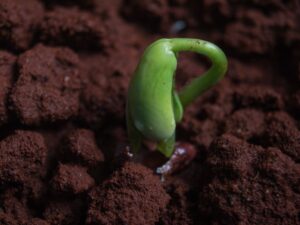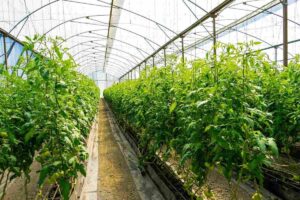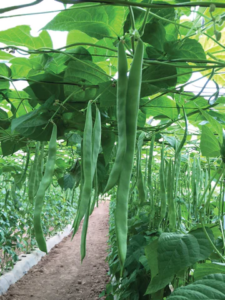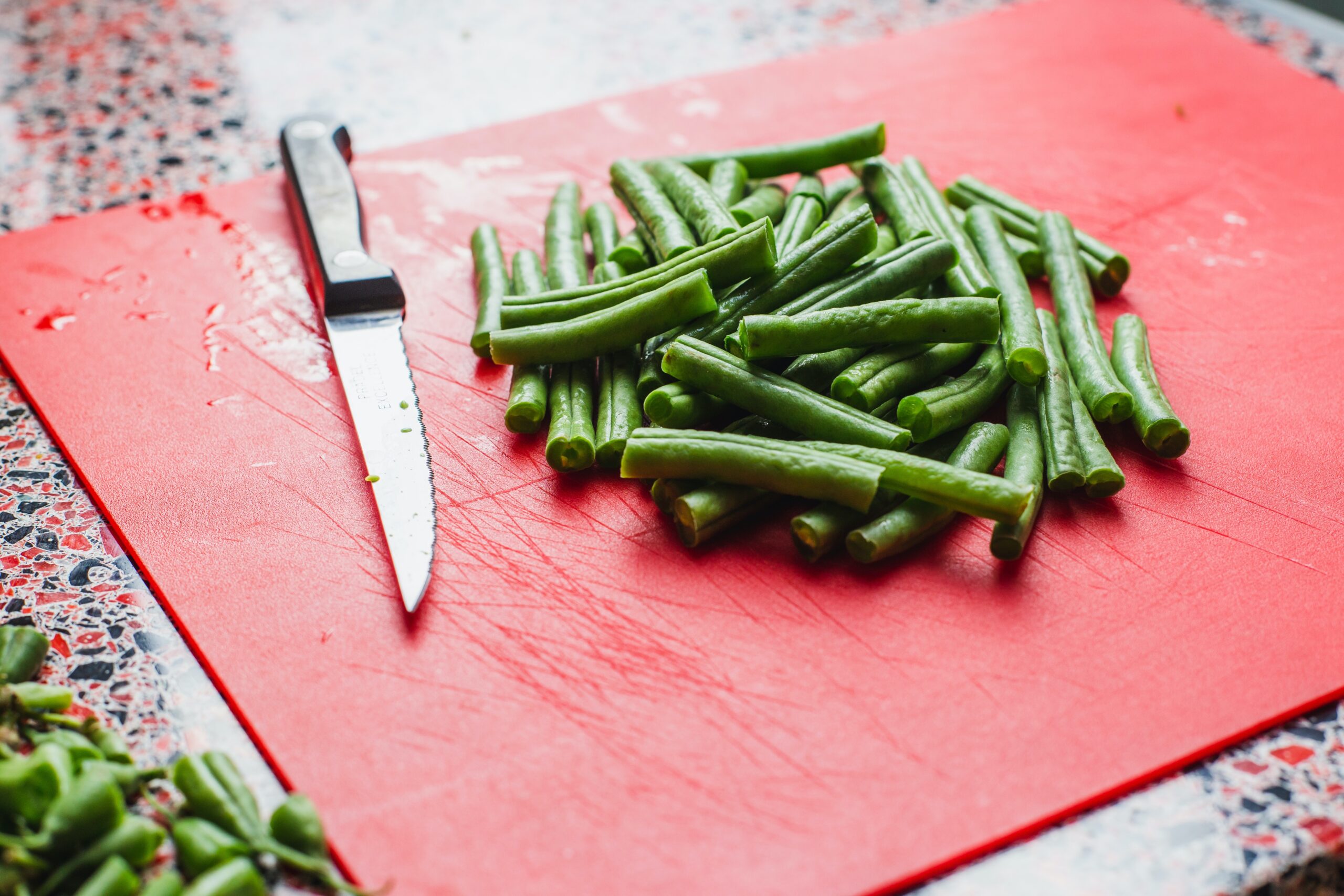Green beans, whether pole beans or bush beans, can be grown in a greenhouse if given good soil, abundant light, regular moisture, and temperatures that do not get too hot. Green beans grow best in temperatures between 16°C and13°C.

A heated greenhouse maintaining an air temperature of 16°C and a minimum soil temperature of 13°C (55°F), allows the producer to grow good crops of French beans out-of-season in the borders. Greenhouses which are glazed down to ground level are best, as the French beans need plenty of sunlight. In South Africa though, you can also grow them in tunnels or multispans, but only if you farm in a really warm and sunny climate area.
Sow the green beans seeds in good quality seed compost, with enough heat, any time from late summer to late winter. Expect cropping from late autumn through to late spring or very early summer. For minimum root disturbance during trans- planting, use peat pots or sow the seeds directly onto soil blocks.
Once the first pair of true leaves is showing, transplant them into the border or frame. The soil should not be too rich, or the plants will make excessively leafy growth at the expense of pod formation. Ideally, soil which has been fertilized from a previous crop is best.
Space the plants 22 cm apart, in single rows 30-37.5 cm apart in frames and in double rows about 30 cm apart in the borders. Climbing varieties grown in the borders will need support. Use strong garden twine, fixed vertically to two parallel, horizontal wires. The top wire can run under the roof, and the lower one should be about 15 cm from the ground. Two plants will climb up the same string.
Green Beans Harvesting

The green beans are ready for picking from ten to twelve weeks after sowing, depending on weather conditions. Once the pods have started to form, check them daily, as they mature quickly. Most varieties are best when about 10 cm long. Unless you are growing the crop specifically for the seeds (either green, as flageolets, or ripe and dried, as haricots) do not allow the ripe pods to remain on the plant. Daily picking will ensure that cropping continues for five weeks, or more.
When tested, pods ready for eating will snap cleanly in half, without any stringy fibers. The beans inside will be visible, but will not have expanded to their full size. Cut the pods from the plant with scissors or secateurs. You can also sever them with thumb and fingernails. Never try to pull the pods off; the plants are very shallow-rooted and you may pull the whole plant out of the ground.
Haricots
The beans of some varieties, if left to ripen fully, can be dried and stored for winter use. In mid-autumn, when the pods are pale brown and beginning to split, the beans are ready for harvesting.
End of grow season

When cropping is over, cut off any remaining growth above ground level. If it is healthy and free from insects, place it on the compost heap. Otherwise, burn all stems and foliage to minimize the spread of pests and diseases. As with all leguminous crops, French bean roots will increase the nitrogen content of the soil as they decay. This is particularly important if the following crops grown on the site are nitrogen-hungry, such as brassicas etc.
With the extensive culinary demand for greens, this product is a simple product to grow, have large market potential providing as always, the greenhouse management is strictly adhered to.
Author: Nicolene Oosthuizen

